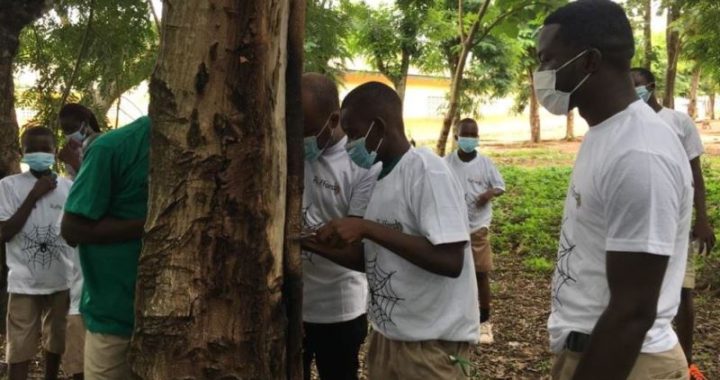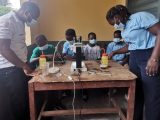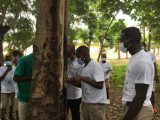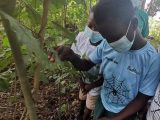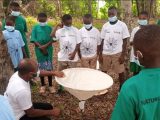For the past months, school children (in the Ahafo Region of Ghana) trained as citizen scientists, collaborated with researchers to assess the levels of biodiversity and ecosystem services of urban green spaces in the Sunyani municipality. They identified over 50 tree species and assigned various uses to the identified trees. Besides, they sampled arthropods and classified them as either pollinators, decomposers or regulators (pest control). The identified tree species and sampled arthropods were grouped as proxies representing ecosystem services provided by urban green spaces in the region.
This study forms part of the pioneering research on biodiversity and conservation citizen science in Ghana. While the findings are policy informative, a large-scale study into other green spaces in urban cities of Ghana using similar approaches will be eminent in achieving sustainable urban green space planning and development.
click images to view
The project lead (Dr. Gyasi Damptey) expressed his appreciation to all participating schools and to the Rufford Foundation and ForestAid Ghana for providing funding for this project. Check (https://doi.org/10.3390/land11101774) for the full results and subsequent discussion on this citizen science project.

